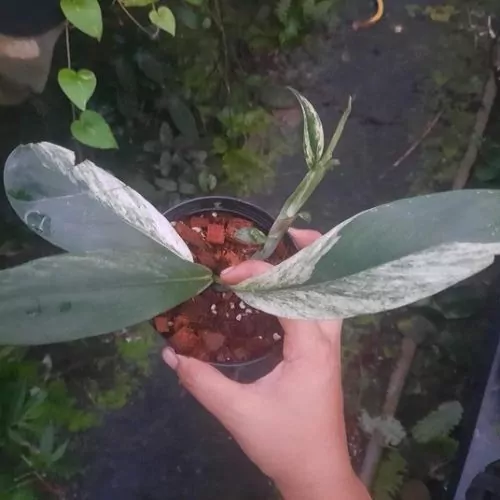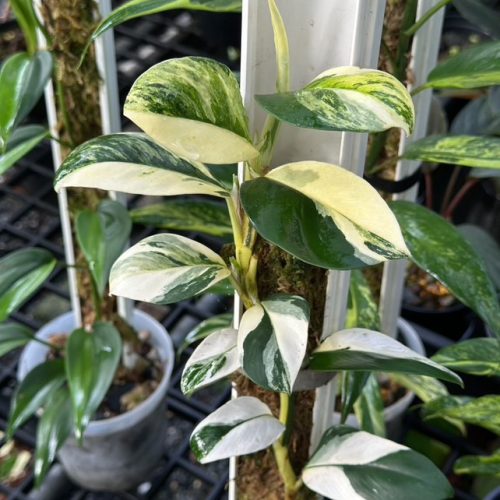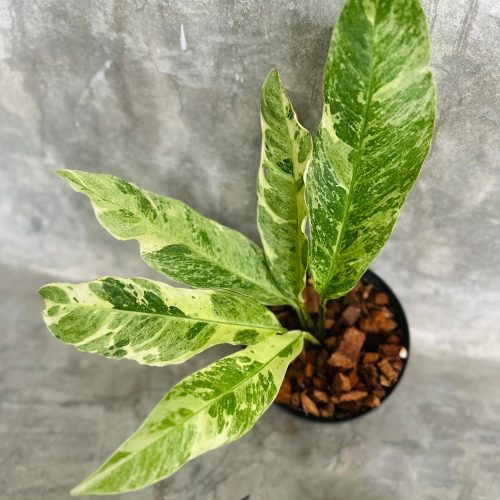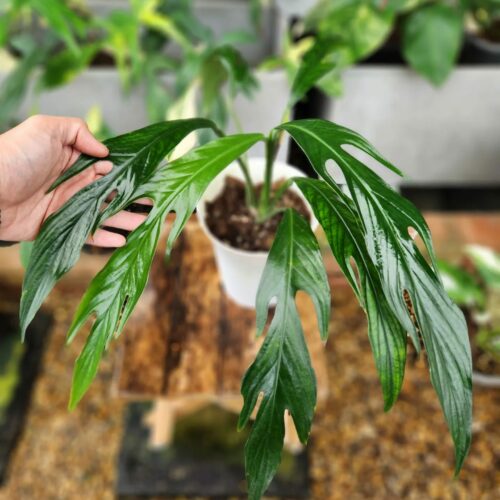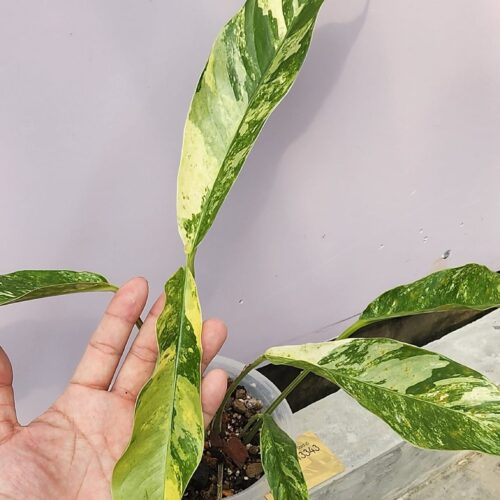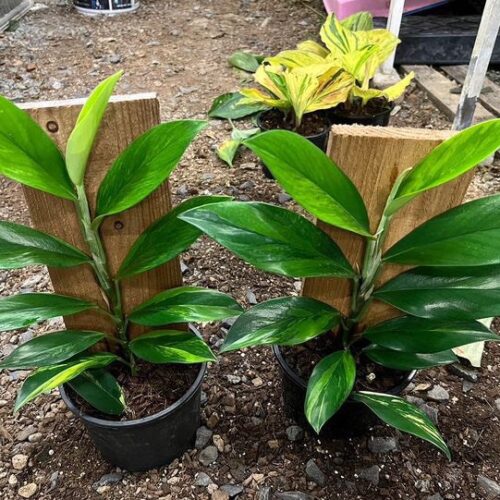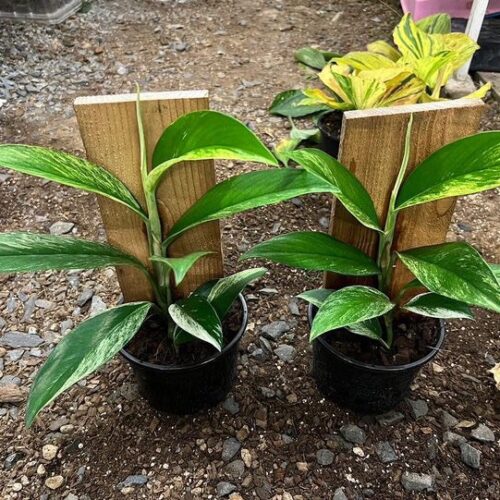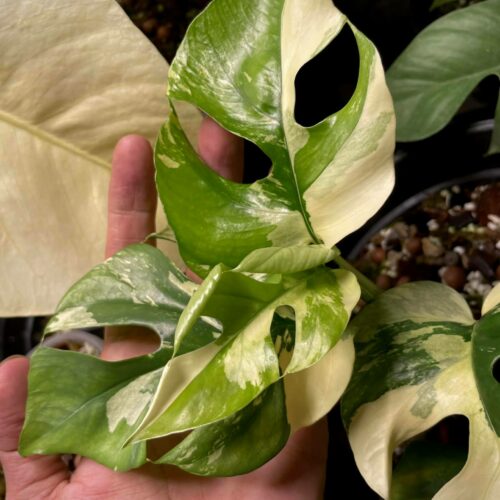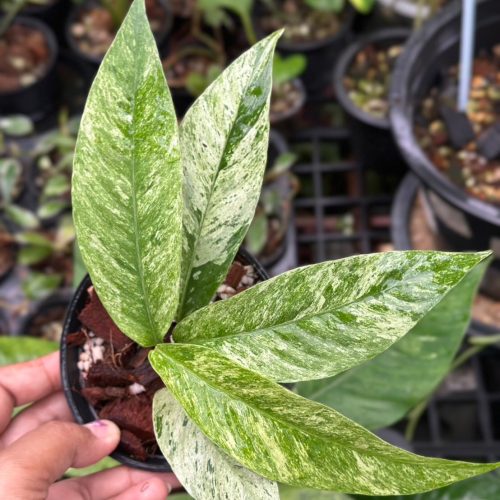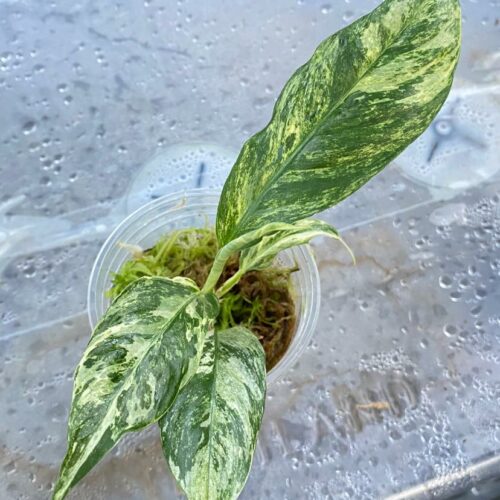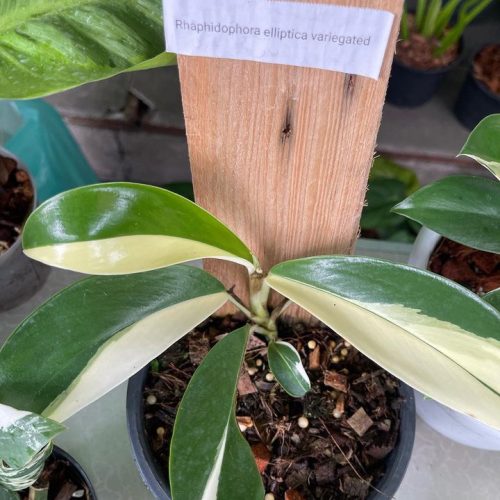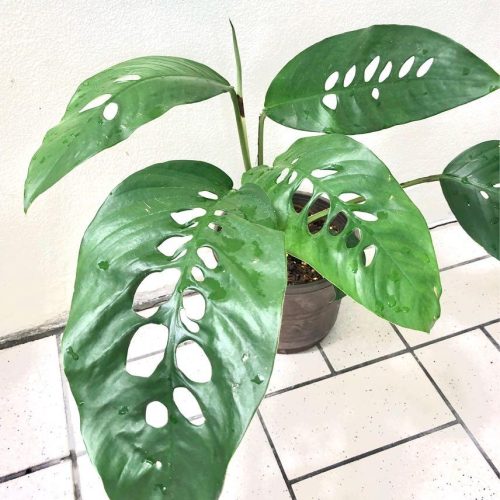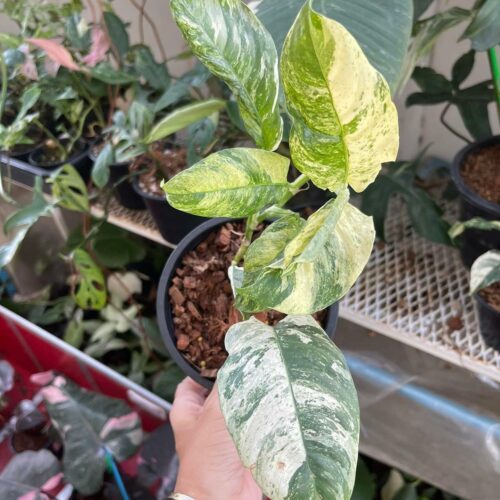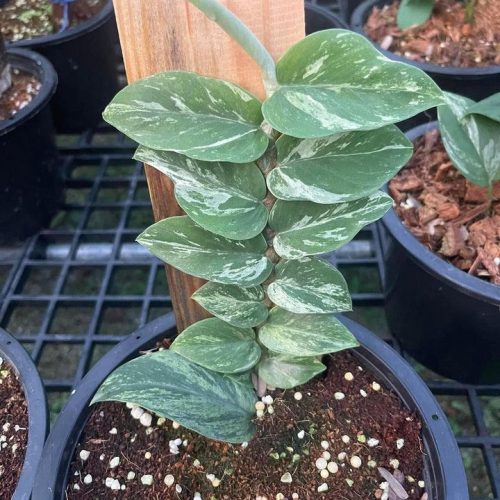The Rhaphidophora Decursiva is a stunning climbing plant that has become a favorite among houseplant enthusiasts. Known for its large, fenestrated leaves, this plant can add a touch of tropical beauty to any indoor space. This guide will provide you with five easy steps to grow and care for the Rhaphidophora Decursiva successfully.
Introduction
The Rhaphidophora Decursiva is a member of the aroid plant family, which includes popular varieties like Philodendron, Monstera, and Anthurium. Native to the tropical forests of Southeast Asia, this plant is prized for its impressive, deeply lobed leaves. Similar to Aglaonema and Epipremnum, the Rhaphidophora Decursiva is not only beautiful but also relatively easy to care for.
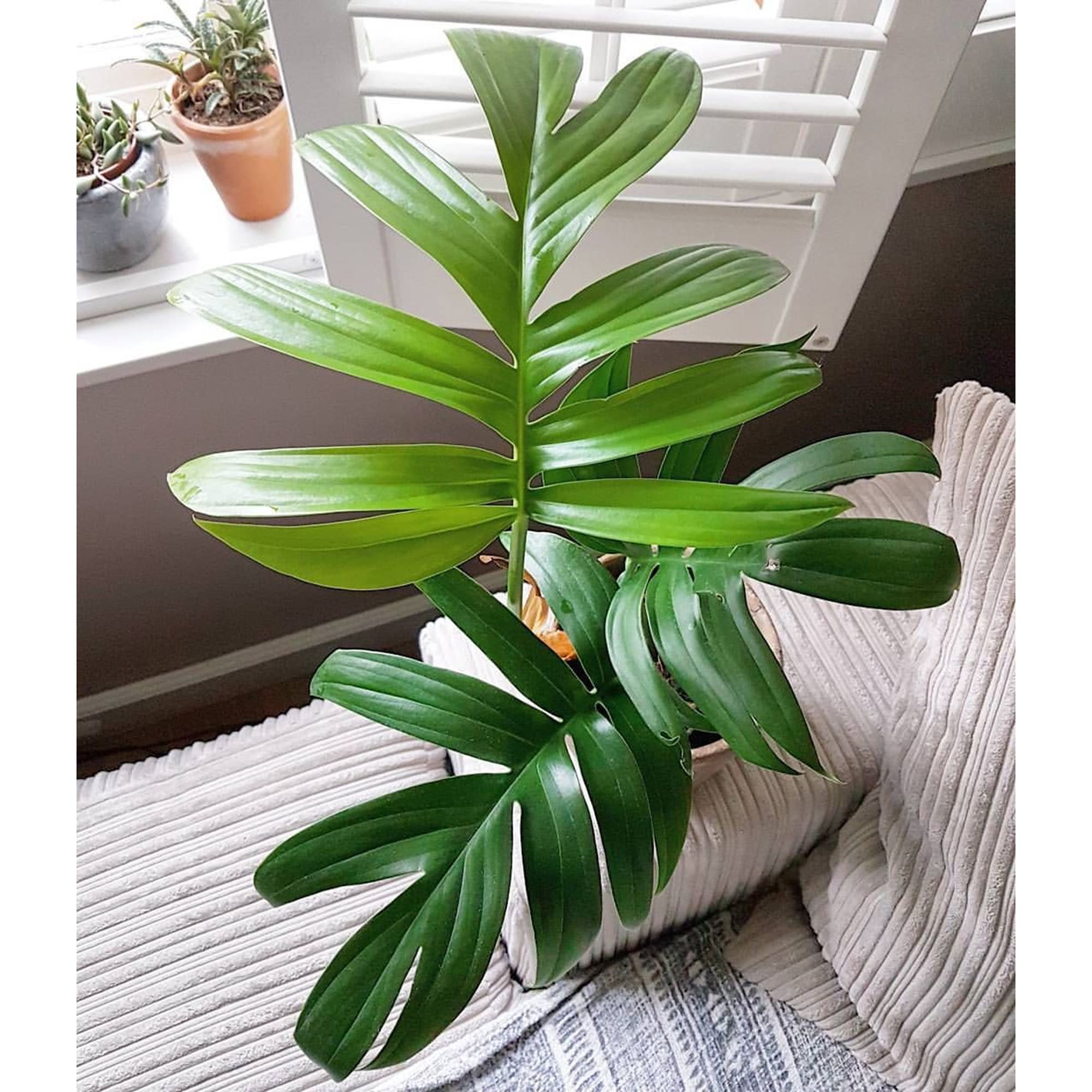
Provide Bright, Indirect Light
Rhaphidophora decursiva thrives best in bright light, but should not be kept in direct sunlight which can scorch its leaves. When positioning this plant in your home, aim for a spot that receives plenty of ambient natural light through the day without getting several hours of direct sun exposure.
South or West Facing Windows
A south or west facing window where the plant can get bright light for much of the day without intense afternoon sun is ideal. Be sure to filter the light if needed with sheers or blinds if the sunlight seems too intense.
Supplemental Grow Lights
If you don’t have an ideal natural light source, you can provide supplemental lighting with grow lights. Use broad spectrum LED grow lights on a 12-16 hour daily timer, positioning the lights close enough to give bright light without generating excess heat on the foliage.
Provide High Humidity
Rhaphidophora decursiva thrives in humid conditions, similar to that of its tropical jungle habitats. Without enough moisture in the air, you may struggle with crispy leaf edges and an unhappy plant.Aim to keep the humidity around 60-80% if possible.
Humidifier
Run a humidifier nearby your Rhaphidophora decursiva to increase moisture in the surrounding air. Choose one with options to adjust the mist output to suit your environment.
Pebble Trays
Place the pot on a pebble tray filled with pebbles and water to create localized moisture and humidity around the plant through evaporation. Replenish the tray water as needed.
“To get a deeper understanding of why Rhaphidophora decursiva needs high humidity, explore Discover the Fascinating World of Rhaphidophora Varieties, which elaborates on the natural humid habitats of these plants.”
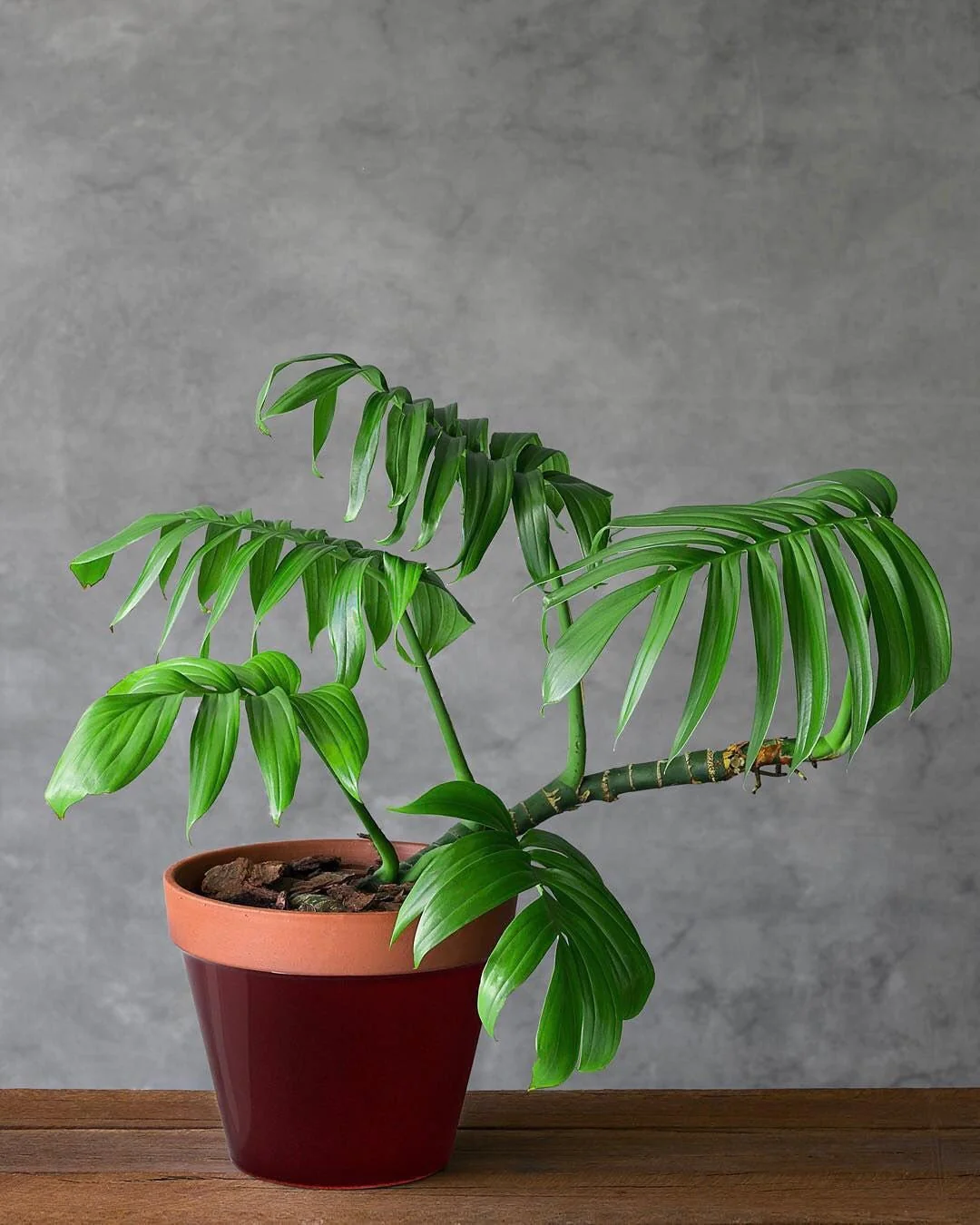
“Transform your space with the stunning Rhaphidophora Decursiva plant. Elevate your home or office decor with its lush green foliage and air-purifying benefits. Don’t miss out on the opportunity to bring nature indoors. Shop now and add a touch of elegance to your surroundings!”
Use a Well-Draining Potting Mix
Rhaphidophora decursiva does not tolerate sitting in wet soil and requires a very fast draining potting mix. Use a light, airy potting mix amended with perlite, orchid bark and horticultural charcoal. Terracotta pots also improve drainage and aeration.
Perlite and Orchid Bark
Mix in at least 20-30% perlite and 10-20% orchid bark into a quality potting soil to ensure excellent drainage and aeration for healthy roots.
Horticultural Charcoal
Add a couple tablespoons of activated horticultural charcoal per gallon of soil mix to help prevent overwatering issues. The charcoal absorbs and holds excess moisture.
“For the best results in soil preparation, consider our guide 5 Best Soil Types To Grow Rhaphidophora At Home, which offers expert advice on creating the ideal growing medium for your Rhaphidophora.”
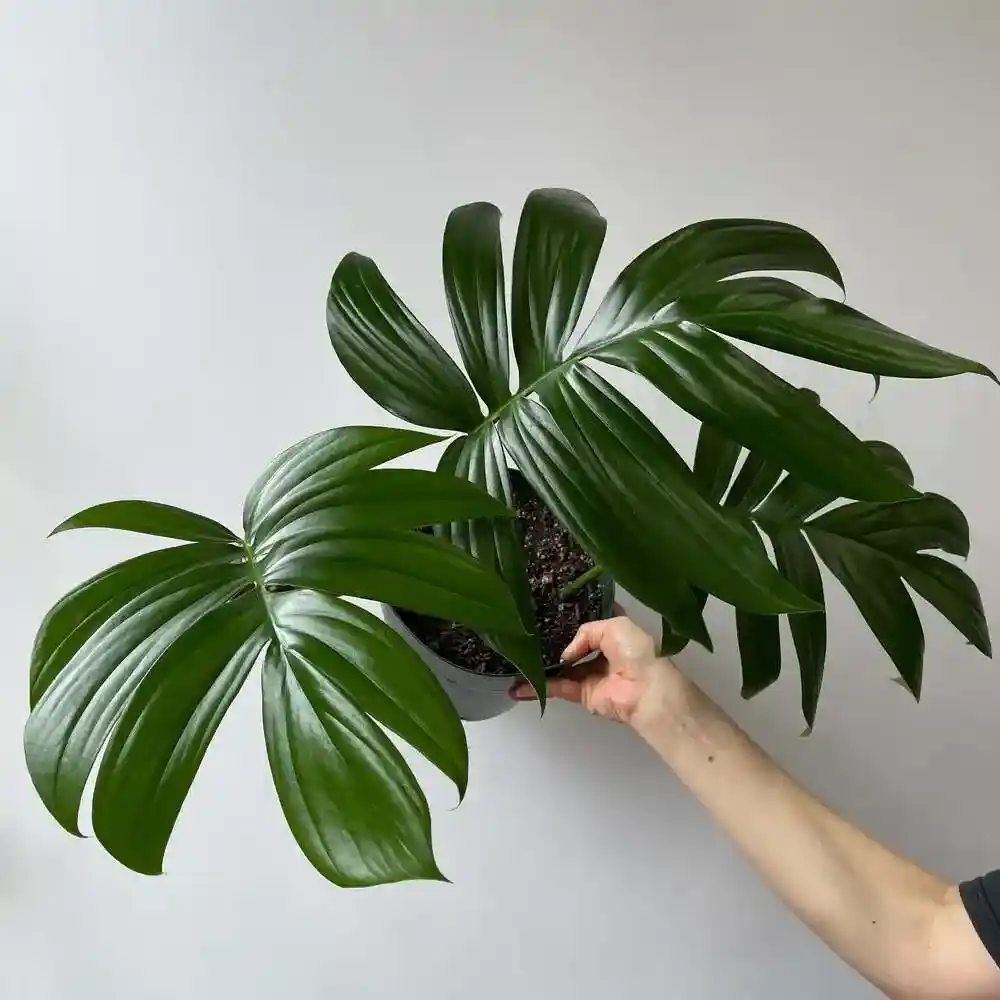
Water Thoroughly then Allow to Dry
Rhaphidophora decursiva should be thoroughly watered whenever the top inch or so of the potting mix has dried out, then allowed to dry down well between waterings. Assess moisture by touch, weight lifting the pot, or moisture probes rather than any set watering schedule.
Water until Drainage
When you do water, pour enough so that excess water drains freely from the drainage holes. This ensures thorough, even watering through the entire root zone.
Allow to Dry Down
It is important to then allow the soil to dry down before your next watering. Wait until the pot feels light and the top layer of soil is dry. Proper drying cycles keeps the roots healthy.
“Maintaining the right moisture balance is crucial. To avoid common watering mistakes, refer to our article 5 Common Reasons Why Your Rhaphidophora Leaves Are Turning Yellow for more details on proper watering techniques.”
Provide a Support Structure to Climb
In their native jungle habitats, Rhaphidophora decursiva uses its long aerial roots to cling and climb up tree trunks and vegetation as they mature. Provide support in your home for visual appeal and healthy growth.
Moss Pole
Situate the young plant near a moss pole, securing some of the aerial roots to the pole with soft plant ties or pins. This provides support as the plant grows taller and gives the vines a structure to adhere to.
Trellis
A tall narrow trellis is another good support option. Place next to the Rhaphidophora decursiva and use soft ties to gently secure some of the vines and developing aerial roots onto the trellis as they grow.
Rhaphidophora species are the most sought after by aroid plant lovers
Conclusion
With the proper growing conditions of bright filtered light, high humidity, excellent drainage, ample moisture then drying cycles, and climbing support, Rhaphidophora decursiva makes a uniquely beautiful and conversation-worthy houseplant. Put in a little extra effort following these key care tips, and you’ll be rewarded with a vigorous, lush, thriving Dragon Tail plant trailing impressively throughout your indoor space.
“For a comprehensive overview of Rhaphidophora and its care, our document Discover the Fascinating Rhaphidophora: A Comprehensive Overview provides a wealth of information, ensuring you can care for your Dragon Tail plant effectively.”
FAQ
- What is Rhaphidophora Decursiva?
- Rhaphidophora Decursiva is a species of tropical climbing plant known for its attractive, lobed leaves. It’s a popular choice among plant enthusiasts for its unique foliage and is often used as a decorative indoor plant.
- How do I care for Rhaphidophora Decursiva?
- To care for Rhaphidophora Decursiva, provide it with bright, indirect sunlight, well-draining soil, and a warm, humid environment. Water it moderately and let the top inch of soil dry out between waterings. Regularly misting the plant can help maintain the humidity it prefers.
- Is Rhaphidophora Decursiva safe for pets?
- Rhaphidophora Decursiva is considered non-toxic to pets like cats and dogs. However, it’s always a good practice to monitor your pets around plants and ensure they do not ingest any part of the plant.
- How can I propagate Rhaphidophora Decursiva?
- You can propagate Rhaphidophora Decursiva through stem cuttings. Simply take a healthy stem cutting with a few leaves, allow it to callus for a day or two, and then plant it in a suitable potting mix. Keep it warm and moist until roots develop.
- What are common issues faced when growing Rhaphidophora Decursiva?
- Common issues include overwatering, which can lead to root rot, and too much direct sunlight, which can scorch the leaves. Additionally, watch out for pests like spider mites and mealybugs. Regularly inspecting your plant can help catch and address these issues early.





















